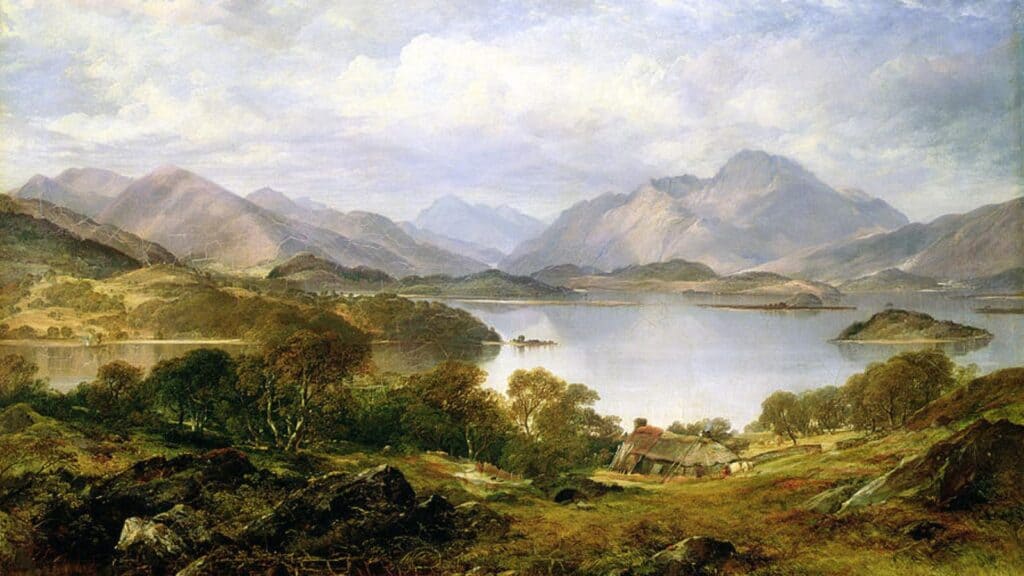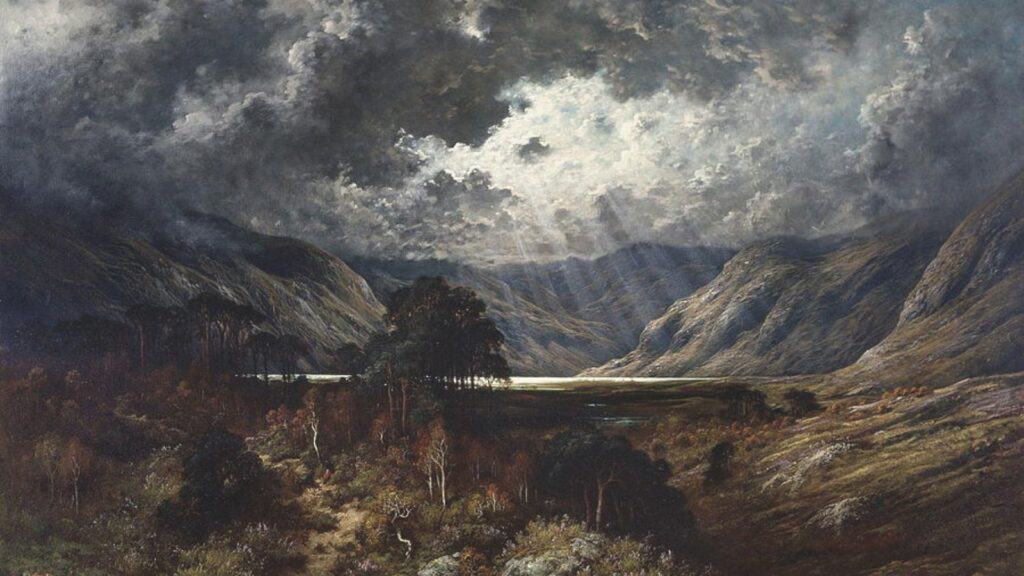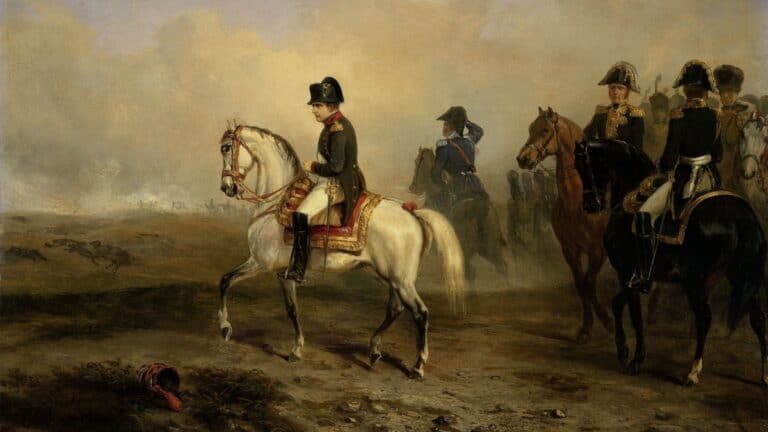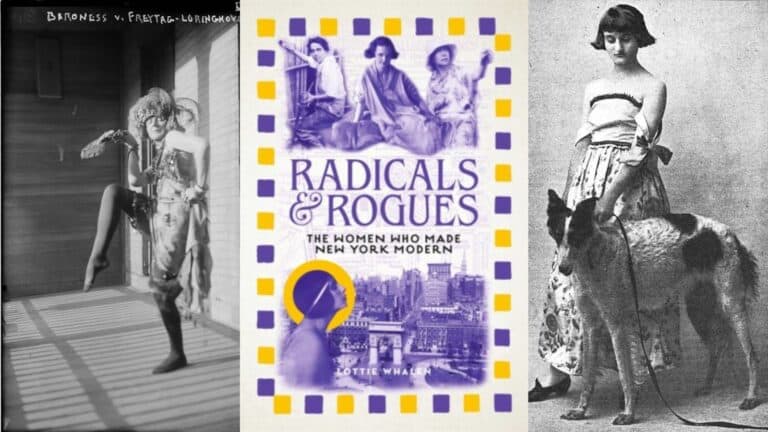You Take The high Road… and I’ll Take The Low Road
This essay is part of “(There is Nothing New) Under the Sun“ A monthly column of random, historical vignettes demonstrating that the more things change, the more they stay the same.
Inspired by events that culminated in the Scottish village of Culloden in April of 1746, the famous lyric from the mournful Loch Lomond Song “you take the high road,” has become the vernacular for doing the right thing. Here is the tragic (yet music-filled) story behind the ballad:
King of England in the early 1500s, Henry VIII doomed his land to centuries of war and unrest in his establishment of the Anglican Church, replacing the Pope with himself at its head which allowed him to divorce his wife to marry his paramour Anne Boleyn (and rumor has it that he composed Greensleeves in celebration of their love). His daughter, Elizabeth I (after inspiring the madrigal Eliza: Her Name Gives Honor), died childless, and her crown went to her Scottish cousin and son of Mary Queen of Scots (no slouch, herself, inspiring no less than Robbie Burns to compose The Lament of Mary Queen of Scots in her honor) James I of England and Ireland, aka James IV of Scotland, uniting the crowns of Scotland and England for the first time in 1603.

King James’ Reign & His Distaste for Catholics
Baptized Roman Catholic but ruling as a Presbyterian, James was outwardly tolerant of the Catholics in his land, but in truth he thought them traitors and agents of Satan and didn’t lift a finger to defuse a culture of suspicion, resentment, and violence, nor did his duplicity prevent infighting between the Protestant and Catholic English, or the Protestant English and the Catholic Highlanders of Scotland. King James authorized one of the earliest translations of the Latin language Bible to be written out in the King’s English, as well as hymns and carols sung in the Anglican churches.
Their disappointment in a king born a Catholic forsaking them inspired a group of English Catholics to plant explosives under the Houses of Parliament in the infamous Guy Fawkes Gunpowder Plot, and the conspirators were caught and executed, cementing further James’ distaste for the Catholic population, and initiating an era of Civil War known as The Jacobite Uprisings, so called for ‘Jacobus,’ the Latin translation of the name James.
Enter Charles I … and Exit Charles I … And Enter Charles II… And Exit Charles II …
James’ reign ended in his death and his son Charles I (who established the post of Master of the King’s Musick, a post that exists to this day) ruled briefly and was executed for his part in disastrous wars, haphazard taxation, following bad advice and marrying a Catholic. He was succeeded by his son, Charles II (obsessed with French woodwind music) whose acceptance of Catholics in the realm made him more enemies than friends. He died young, left his crown to his brother who became James II, another Catholic sympathizer. He was chased out of Britain and went into exile in France with his son, another James, who was the father of the romantic rebel, Bonnie Prince Charlie, or Charles Edward Louis John Casimir Sylvester Severino Maria Stuart. Raised in a Catholic country, Prince Charlie had no doubt that he was the rightful heir to the English throne, or that God had anointed him to take the crown.
Here Come The Protestant Germans
In the meantime, English Parliament had tapped the German House of Hanover and installed them as their Kings, beginning with George I, who was only 52nd in line to the British throne but the first available Protestant in line! Of course, the Catholic subjects of the realm were unhappy that the rightful heir, their own Catholic Bonnie Prince Charlie, had been overlooked, and so the overture to the tragic denouement began.
Jacobite Rebellion
The final rebellion of the Jacobites took place on April 16, 1746 at the famous, 40-minute Battle of Culloden Moor. An army of 7,000 tired, hungry Scottish Highlanders were defeated by King George’s red coats, but Charlie got away (infamously, dressed as the ladies maid to Flora McDonald, who rowed him out to the Isle of Skye – cue The Skye Boat song – from which he fled to The Continent), and eluded capture for the rest of his life, despite the £30,000 bounty on his head (approximately £160,000,000.00 or USD $216,879,840.00 today). He never set foot in Scotland again and died in Rome at the age of 68. After the rebellion was quelled, the playing of bagpipes was outlawed in Scotland as treason against the English ruler!

Most of those unfortunate Jacobites who lived through the battle were taken prisoner, tried, found guilty of treason, and sentenced to death. To deter future rebels, the heads and body parts of the Jacobites were displayed on pikes from London to Edinburgh and left to rot in a gruesome public display. Lore suggests that the Loch Lomond song expresses the contemporary notion that one took the “High Road” back to Scotland, while the “Low Road” led to the gallows, and the executed Scots, now spirits, would get back to the Homeland before those living people walking along the high road.
The Loch Lomand Song
[Verse 1]
By yon bonnie banks and by yon bonnie braes
Where the sun shines bright on Loch Lomond
Where we two have passed so many blithesome days
On the bonnie, bonnie banks of Loch Lomond
[Chorus]
O you’ll take the high road and I’ll take the low road
And I’ll be in Scotland afore ye
But me and my true love will never meet again
On the bonnie, bonnie banks of Loch Lomond
[Verse 2]
I mind where we parted on yon shady glen
On the steep, steep side o’ Ben Lomond
Where in purple hue, the Heiland hills we view
And the moon shinin’ out from the gloamin’
[Chorus]
O you’ll take the high road and I’ll take the low road
And I’ll be in Scotland afore ye
But me and my true love will never meet again
On the bonnie, bonnie banks of Loch Lomond
[Verse 3]
The wee bird may sing and the wild flowers spring
And in sunshine the waters are sleeping:
The broken heart will ken nae second spring again
And the world does not know how we’re grievin’







